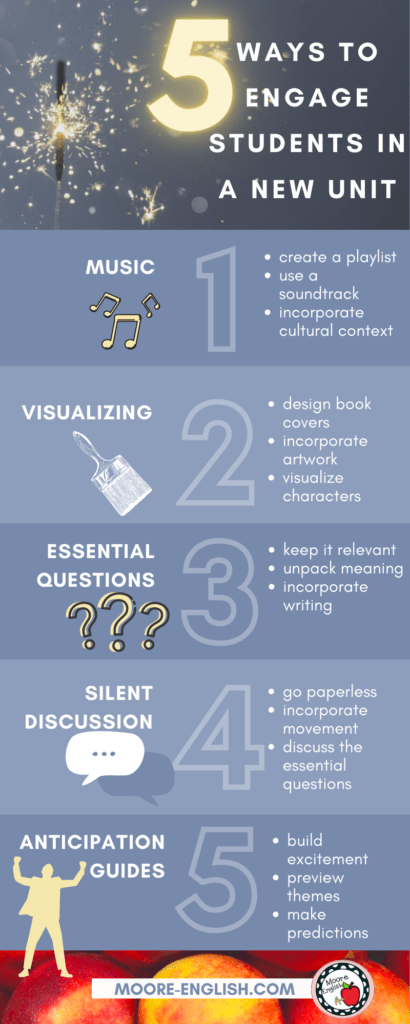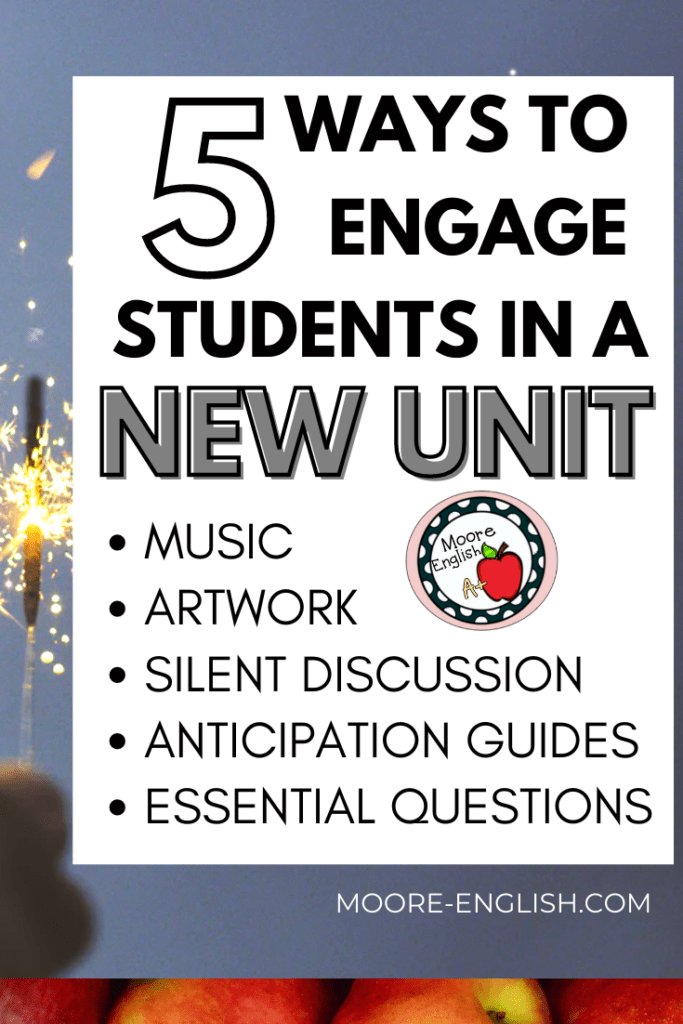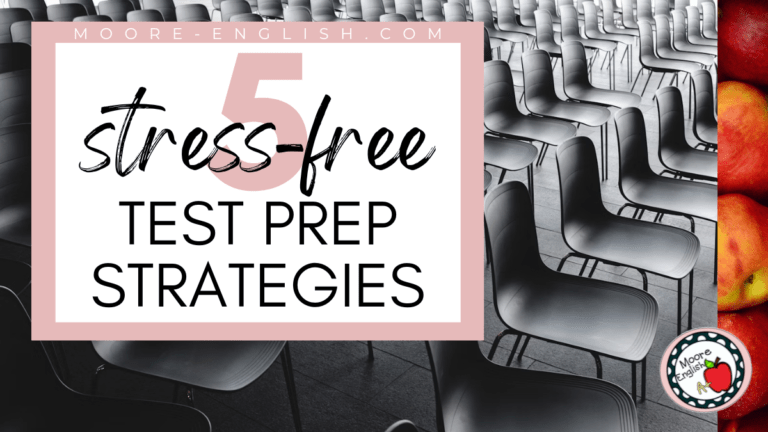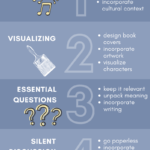The start of a new unit is always an exciting time! A new unit can refocus students, provide a renewed sense of inspiration, or revitalize a slumping classroom culture. At the start of a new unit, I work to communicate my enthusiasm with students and to get them “hooked” on a new unit of study! With that in mind, today I’m going to share some of my favorite strategies for engaging students in new content!
This post this post may contain affiliate links. Please read the Terms of Use.
New Unit? Listen to This
Music is an important part of the teenage experience. They trade song recommendations back and forth and argue fiercely about their favorite artists. Many students join band, orchestra, or choir because they enjoy music!
With this in mind, starting a new unit with music can be a good way to engage students. For example, teachers can create a playlist that fits the aesthetic (another topic about which my students feel very passionate) of a novel.
Based on the playlist, students can make predictions about the text. Teachers can design their own playlists, or if there’s already a film version of a novel, use that soundtrack. As the unit progresses, students can update the playlist or create their own.
Here are some of my favorite soundtracks to use with this activity:
Visualizing a New Unit

Students often learn through visualizing text. At the start of a new unit, teachers can engage students with visual representations of the text. This can be a good way to help students begin to learn characters and settings. Students can make predictions about the text, determine how artists create mood, and begin working on the most challenging CCSS ELA standard.
To begin, artwork is a great way to engage students in a new text. The Metropolitan Museum of Art and Smithsonian Institute have collections of teacher resources. Teachers can use these resources to find artwork that suits their new units of study. Because this strategy has worked for my students, I have put together a collection of artwork to use alongside some of William Shakespeare’s most popular plays.
Similarly, the internet features countless contests for designers to re-imagine the covers of popular novels. Walking students through a series of book covers can be a great way to build anticipation, preview important symbols, and spark creativity! Pinterest is full of these re-designed book covers, so I’ve put together some boards with book covers and movie posters for this activity!
Unpacking Essential Questions
While each unit helps students build skills, the very best units are relevant beyond the classroom. Relevance, perhaps more than anything, is the best way to engage students in a new unit. For this reason, writing meaningful essential questions is, you guessed it, essential.
Once you have designed your essential questions, it’s time to help students unpack their relevance. Firstly, essential questions make great journal prompts. Similarly, essential questions can be ideal content for silent discussions. If you’re looking to create more movement in your classroom, a strategy like 4 Corners can be ideal.
Anticipation Guides
Finally, anticipation guides are probably the most tried-and-true way to engage students in a new unit. With an anticipation guide, teachers can preview those essential questions and themes. Depending on how teachers use anticipation guides, they can also be a source of classroom movement and meaningful discussion. With all of this in mind, I’ve been going through a kind of anticipation guide renaissance. In the last month, I’ve put together eleven free anticipation guides. Click below to grab the freebies that fit your curriculum!
- Macbeth
- Beowulf
- The Crucible
- Julius Caesar
- The Odyssey
- Things Fall Apart
- Romeo and Juliet
- The Great Gatsby
- Pride and Prejudice
- To Kill a Mockingbird
- The Things They Carried


Photo by Jacqueline Munguía, Ben White, and Cristian Escobar on Unsplash











